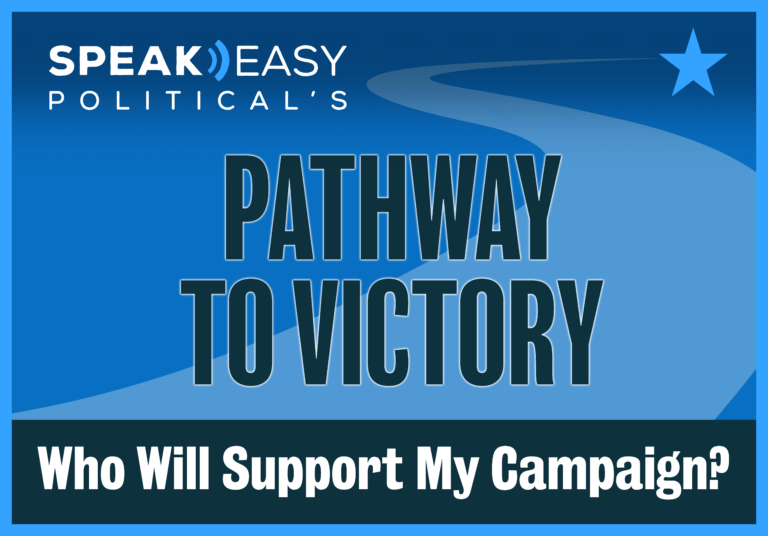Thinking about running for office? Have a million questions about how to get started, gain campaign support, and win? We’re here to help.
Keep reading for a few of the tips you’ll find in 101 Steps to Victory: A How-To Guide for First-Time Political Candidates. This free e-book outlines the 101 most important things a first-time candidate needs to know to keep their campaign on the path to victory. And check back with the Speakeasier blog in the days and weeks ahead for more of our 101 Steps to Victory.
As we previously highlighted, the success of your campaign will come down to your preparation as a candidate, but running for office isn’t something you can do alone. Over the course of the campaign you’ll need to ask other people for their support. You’ll ask for their time, their help, their money, and — most importantly — their vote.
It can be daunting to think about how many people you’ll need to win over by Election Day. But it’s much more manageable if you can start with a strong base of support. Begin with the people closest to you, and build from there.
Make a list of everyone you know.
If you don’t know 100 people whom you think might support your campaign, you might want to consider waiting to run until you do. Good campaigns have good lists. You are already “campaigning” when you make this list, so take it very seriously. A legal pad is fine, but better to start with Excel (more on databases below) and include basic fields — First Name, Last Name, Street Address, City, State, Zip, Cell Phone, Home Phone, Email Address and a Notes field where you can write down how you know them.
Check the list of supporters you made earlier.
Did you find everyone? Go get the old high school yearbooks. Ask mom and dad for their holiday card list (you probably know most of those people also). Were you in a sorority? Math club? Softball league? Brainstorm here and ask for help — you need to make a list of everyone who might possibly remember your name. If you are a member of an organization, you might not know everyone in that organization but work to get those lists if you can.
Invest a few hours in learning a very simple database program.
The simpler the better — Excel is fine. We think it is better to use off the shelf technologies instead of trying to create something custom. As long as the program you use will export a CSV file, you are covered. We’ve already discussed the basic fields — now add a few more. You are going to be reaching out to everyone you know on this list and asking them to support your campaign, so add a Yes, No and Undecided field too. You will be asking most of them for money, so add fields: Yes, Will Give; No, Can’t Give; Can’t Give Now. Then add a field for the amount pledged. When you follow up on the pledges, add a field for the amount received.
Organize ten people who will absolutely support your campaign into a Kitchen Cabinet.
These should be people you can rely on to help you in the campaign ahead. People can get tripped up here and try to recruit experts. You can consult with experts later. What you want are the kind of people who would help you move or be happy to babysit if your sitter falls through. You want positive doers, not just folks who think they are helping by critiquing the color of your lawn sign.
PRO TIP: Still looking for more supporters? Go through your Facebook, LinkedIn and Twitter communities. That should jog your memory. (If you are not part of these networks—drop everything and join them now and spend a week mastering how they work).
Think you’re ready to run? Want to learn more? Download our Campaign Playbook to help you build a winning political campaign from the ground up and be sure to stay tuned for more from our Pathway to Victory series.




